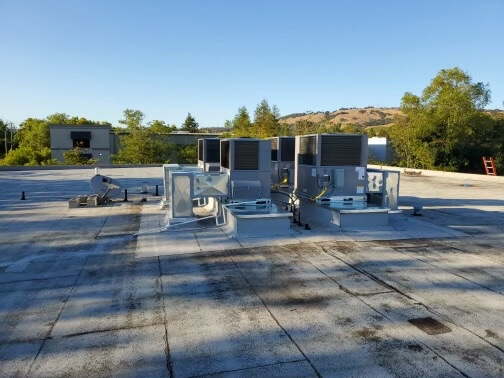When it comes to keeping your home cool in the summer and warm in the winter, how many options do you have? Sure, there’s plenty of variation to be found concerning heaters — some use natural gas for fuel, while others use oil or the power of electricity, such as your AC. What about the whole package, though? Whether you’re thinking about building a new home or you’re simply curious about the options that are out there on the market, there are several different systems to know. Some may be familiar, while others can be less common in your area. Let’s start by diving in to one of the lesser known types of HVAC systems.

1. Packaged HVAC Systems
Most people think of their heating and cooling units as separate entities, with different equipment handling each job. In a typical home, that’s true. In places where space is at a serious premium, however, a “packaged” HVAC unit might be the right choice. In a package unit:
- Both the air conditioning equipment and the heating implements are put together into one self-contained unit.
- Typically placed outside, or if possible, on the roof of the home, these units don’t require the usage of any interior space. That allows homeowners to achieve the outcomes they want regarding heating and cooling without sacrificing valuable living space for the convenience. It’s also why they are a popular choice for commercial HVAC.
- Keep in mind that package units come with plenty of variation on their own; they can rely on electric or gas heat, for example, or a combination of both.
This level of flexibility is what makes them a prime choice for certain homes. However, other properties will do best with more traditional setups.
2. Ducted Split-System
If you’re familiar with any of the types of HVAC systems out there on the market, then what you probably know best is the split system. Relying on a home’s built-in ducting, split systems have exterior and interior units that work together to condition the air and circulate it throughout the building. These units usually have some distinct parts:
- An air handler, often tucked into a utility closet indoors, though sometimes also placed in attics.
- The handler connects to an outdoor compressor unit that helps drive refrigerant through the cooling system.
- There is also a separate furnace unit, usually powered by either electricity or natural gas, which handles the heating duties when necessary.
Split systems are advantageous not only because they’re generally efficient, but also because they are such an industry standard. That makes maintenance and upkeep simpler, and when repairs become necessary, parts and replacement equipment are easy to find.
3. Hybrid HVAC systems
In many ways, hybrid split systems (also known as dual fuel) are no different than those described above. They feature the same combination of indoor and outdoor equipment, and they use a home’s ducts to circulate hot or cold air as necessary. However, hybrid systems offer a new advantage that was previously unavailable to homeowners: the ability to exercise more control over their energy consumption in the winter. You can do this by including an electric heat pump system along with the traditional gas furnace.
If temperatures plunge below freezing, a homeowner can activate the traditional furnace and access plenty of heat right away. However, when it is cool but not cold, the heat pump offers better energy efficiency. This combination can drive down energy usage and gas consumption. It doesn’t just save money — it’s better for the environment, too.
4. Ductless Mini-Split Systems
A popular choice in places where homes don’t often have built-in ducts, and in many locations where cooling room by room is a better option, mini-splits are just what the name says. They are a smaller, more compact version of a typical AC unit. While there is still an outside compressor unit that the system needs to operate, ductless mini-splits have hardware that mounts directly into the room that requires cooling. Typically, this is over the doorway that enters the room. They have a few benefits:
- When activated, mini-splits can very efficiently cool down small to medium size spaces quite quickly.
- Mini-splits yield the ability to control energy costs by only cooling the rooms that people will occupy.
- Mini-splits are particularly useful for bedrooms as well as small dwellings with a smaller volume of air to cool.
Although the initial installation can be more challenging, the long-term benefits are worth taking the time to explore these options.
Learning More About the Many Types of HVAC Systems
While it is likely that your home has a typical split-system, that doesn’t mean it is your only option. Of course, if new construction is the name of the game, then the sky is the limit regarding choosing heating and cooling systems that will deliver the level of performance your family requires. As you consider the various types of HVAC systems, don’t forget to make contact with a professional in your area. Not only can a friendly HVAC installer answer questions you may have about your options, but they can also provide you with a direct connection to the equipment itself. Take the time to learn about all your choices today.



